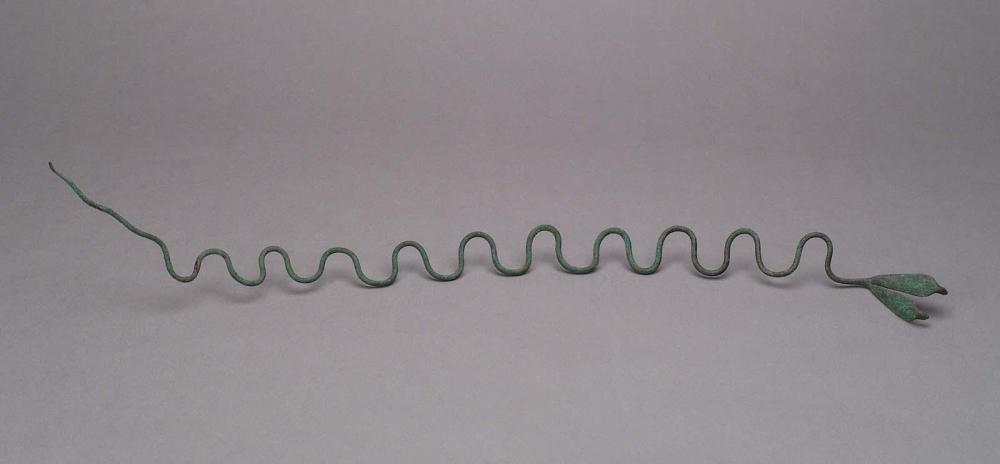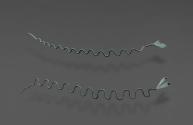Advanced Search
Wand in the form of a two-headed serpent
Egyptian
Middle Kingdom to Second Intermediate Period
1783–1640 B.C.
Medium/Technique
Bronze
Dimensions
Length: 57 cm (22 7/16 in.)
Credit Line
Museum purchase with funds donated by Walter and Celia Gilbert
Accession Number2002.32
NOT ON VIEW
CollectionsAncient Egypt, Nubia and the Near East
ClassificationsReligious and cult objects
DescriptionMagic played a crucial role in ancient Egyptian life. It was invoked to protect both the living and the dead from potential hazards, as well as to cure illnesses and other misfortunes that had already occurred. Pre-served writings, from literary tales to medical papyri, indicate that both kings and commoners sought the services of well-educated sages capable of combining the roles of advisor, physician, priest, prophet, and magician. In addition to their ability to predict and diagnose problems and their knowledge of essential spells and potions, magicians required appropriate devices for rendering the spells effective. This magic wand is a rare surviving example of such a magician's tool. The wand takes the form of a two-headed cobra. Serpents were believed to be capable of averting adversity, just as the uraeus cobra on the brow of the royal headdress defended the king by spitting venom at his enemies. Here, the serpents are probably meant to represent the snake goddess Weret-Hekau, known as the "One Great of Magic." Their body is extended into a stylized, sinuous line, while their heads rear up with outstretched hoods as if about to strike. The wand would have been held in the hand during magical rites, perhaps to protect mothers and newborns during childbirth. Similar wands appear in the hands of a figurine, now in the Manchester Museum in England, of a young, nude woman wearing a lion mask and playing the role of the protective lioness demon Beset. It is possible that such a priestess or a physician once used this pair of wands.
Egyptian magicians with serpent wands also appear in the Bible. In the story of the Exodus (Exodus 7:8-13), Pharaoh summons his wise men and sorcerers, who cast their rods on the ground, transforming them into snakes. Aaron does the same, turning his own staff into a serpent that devours those of Pharaoh's magicians.
Egyptian magicians with serpent wands also appear in the Bible. In the story of the Exodus (Exodus 7:8-13), Pharaoh summons his wise men and sorcerers, who cast their rods on the ground, transforming them into snakes. Aaron does the same, turning his own staff into a serpent that devours those of Pharaoh's magicians.
ProvenanceBy about 1972, said to be in a German private collection. 2002, sold by Vincent J. Geerling, Archea Ancient Art, Amsterdam, to the MFA. (Accession Date: March 20, 2002)





